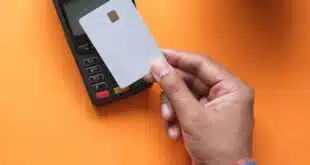By John Stewart
@DTPaymentNews
If Amazon.com Inc.’s $13.7 billion acquisition of Whole Foods Market Inc. closes later this year as expected, it could set the stage for a radical redefinition not just of in-store payments, but of the checkout experience itself, observers say.
The deal, which Amazon announced late last week, will hand the online retailing giant some 460 brick-and-mortar grocery stores across the country at a time when it has been experimenting with physical retailing and payment processes.
These tests include a concept store it built in Seattle that eliminates the traditional checkout by allowing customers to walk out with their purchases and have the goods charged to their Amazon account. The concept store, called Amazon Go, opened in December for the employees of Seattle-based Amazon, with the expectation that it would soon become available to consumers generally who have installed the Amazon Go app.
Besides Amazon Go, the company has also opened five bookstores around the country where customers can use mobile phones and quick-response codes to access book reviews and pay for the merchandise.
Amazon’s ambitions in physical retailing, particularly groceries, have been well-documented. The online news site Business Insider reported in October 2016 the company’s internal plans included opening 20 food stores within two years and some 2,000 over the following decade.
But now, with the Austin, Texas-based Whole Foods chain ultimately in its fold, Amazon will have the potential to do more than experiment with technologies that enable mobile payments and streamlined checkouts. It will have the ability to implement those technologies nationally, either in a phased or all-at-once rollout. “This [deal] is a massive, Richter-scale event that will shake not only grocers but nearly every retailer and all those in the payment space,” notes Richard Crone, principal at Crone Consulting LLC, a San Carlos, Calif.-based payments consultancy, in an email message.
An Amazon spokesman refused to comment on the company’s payments plans.
Already, the Amazon Go store combines artificial intelligence with QR codes to remove the traditional checkout and give customers an Uber-like experience. Customers identify themselves when they enter the store by scanning a QR code on their phone. Sensors detect and identify products customers remove from shelves, and also detect items customers put back. When customers walk out, the purchase is automatically charged to a stored credit or debit card.
In this way, while new technologies are involved, Amazon also relies on its underlying, tried-and-tested account base and one-click payment flow. This combination, if implemented with Whole Foods, will pressure competing grocers. “Amazon will make One-Click embedded payment capabilities table stakes for all retailers,” says Crone.
That will mean competing stores will have a lot of catch-up to do. With the exception of Wal-Mart Stores Inc., says Crone, “none of the traditional grocers, not even Whole Foods, for that matter, has incorporated true mobile payment and order-ahead into their own apps.”
The importance of dissolving the traditional checkout in physical retailing may have become clear to Amazon, at least in part, through its experience with the bookstores. While 50% of customers use mobile phones while shopping inside the stores, by the time they get to the checkout only between 2% and 4% still have the phone out to pay, according to Patrick Gauthier, vice president of Amazon’s Pay With Amazon unit, who spoke with Digital Transactions News in March.






